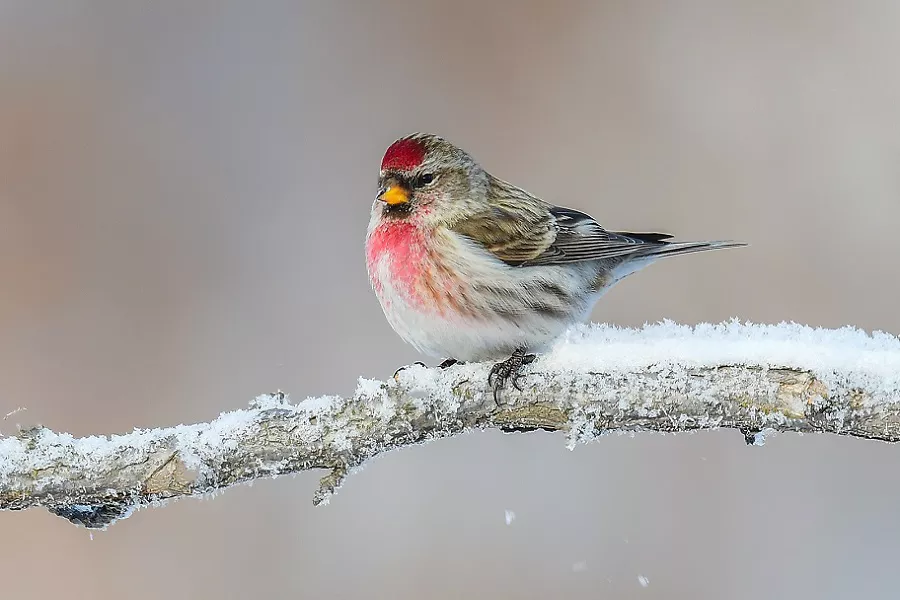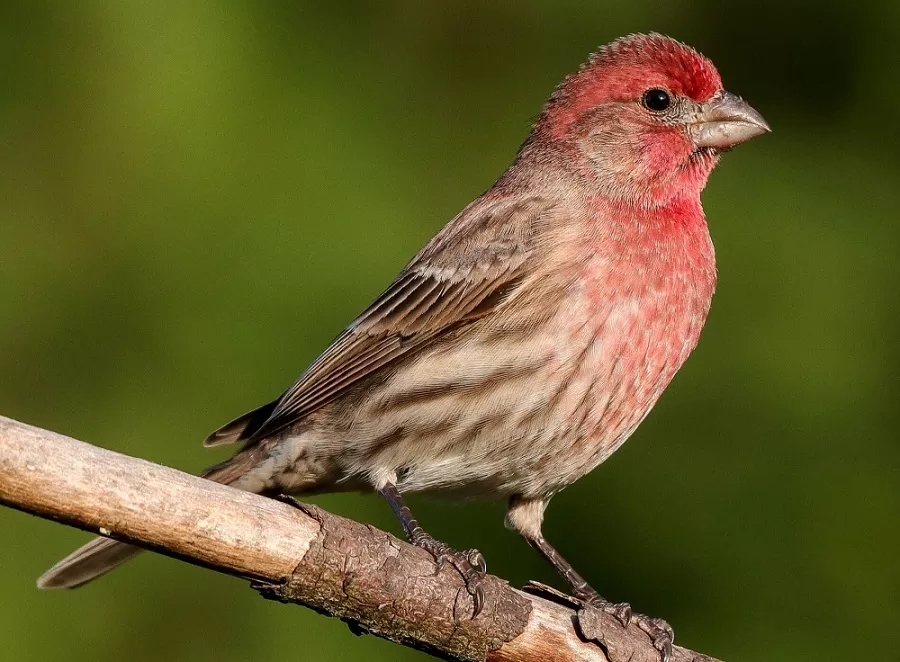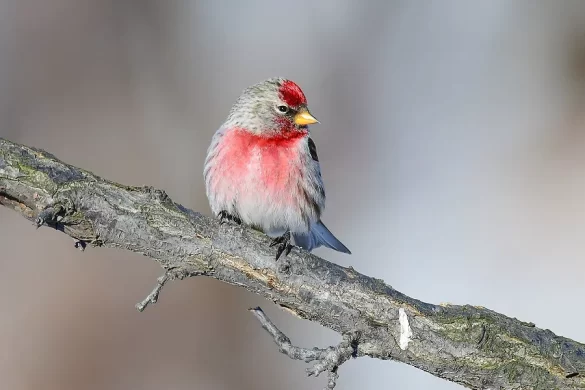Finches, with their vibrant plumage and melodious songs, are among the most beloved birds worldwide. Within this diverse family, the Common Redpoll (Acanthis flammea) and the House Finch (Haemorhous mexicanus) stand out for their distinctive features and behaviors. This article delves into the characteristics that set these two species apart, from their physical traits to their habitat preferences and behavioral patterns.
Physical Characteristics
Size: Common Redpolls and House Finches exhibit notable differences in body size and wingspan. On average, Common Redpolls measure around 5 inches in length with a wingspan of approximately 8 to 9 inches. In contrast, House Finches are slightly larger, measuring about 5.5 to 6 inches long, with a wingspan ranging from 8 to 10 inches.
Plumage: Plumage is a defining feature of both species. Common Redpolls display a predominantly brownish-gray body with distinct streaks on the flanks and back. One of their most striking features is the bright red crown atop their heads, which contrasts sharply with the rest of their plumage. In contrast, House Finches boast a mixture of brown, gray, and streaked patterns on their bodies. The males are particularly notable for their vibrant red patches on the head, throat, and chest, while females and juveniles exhibit more subdued colors.
Bill: The bill shape and size also differ between Common Redpolls and House Finches. Common Redpolls have small, conical bills suited for extracting seeds from various plant sources. In comparison, House Finches possess slightly larger, more robust bills adapted for cracking open seeds and accessing nectar from flowers.

Common Redpoll
Habitat and Distribution
While both species can be found in North America, their distribution patterns and habitat preferences differ significantly.
Habitat: Common Redpolls prefer to inhabit open woodland areas, particularly those with birch and alder trees. During the breeding season, they may also be found in boreal forests and tundra regions. In contrast, House Finches are more adaptable and can thrive in a variety of habitats, including urban areas, suburbs, parks, and gardens. They are commonly spotted near human habitation, where they utilize bird feeders and ornamental plants for food and nesting sites.
Distribution: The distribution of these species varies significantly. Common Redpolls are primarily found in the northern regions of North America, Europe, and Asia. They are known for their seasonal migrations, with populations venturing southward during the winter months in search of food. House Finches, on the other hand, have a more extensive range, spanning across much of North America, from southern Canada to Mexico. They are considered year-round residents in many areas but may undertake local movements in response to seasonal changes.
Behavioral Traits
Social Behaviors: Common Redpolls are known for their gregarious nature, often forming large flocks, especially during the winter months. These flocks roam in search of food, frequently associating with other small songbirds. House Finches are also social birds, often gathering in small to moderate-sized groups. However, they tend to be more sedentary and territorial, particularly during the breeding season when males establish and defend nesting territories.
Feeding Habits: Both species primarily feed on seeds, but their feeding habits differ slightly. Common Redpolls have a preference for birch and alder seeds, as well as the seeds of various grasses and weeds. They may also consume insects and berries, particularly during the breeding season. House Finches have a more varied diet, feeding on a wide range of seeds, fruits, and buds. They are frequent visitors to bird feeders, where they readily consume sunflower seeds, millet, and other offerings.

House Finch
Vocalizations: The vocalizations of Common Redpolls and House Finches are distinct and can aid in species identification. Common Redpolls produce a series of soft, musical trills and chirps, often delivered in flight or while perched in trees. House Finches are known for their lively and varied songs, consisting of melodious warbles, trills, and chirps. Males, in particular, sing to defend territories and attract mates, with each individual possessing a unique vocal repertoire.
Seasonal Behavior: Seasonal changes influence the behavior of both species. During the breeding season, Common Redpolls become more territorial, with males engaging in courtship displays and aggressive interactions with rivals. They build cup-shaped nests in trees or shrubs, lining them with soft materials such as moss, feathers, and plant fibers. House Finches also exhibit territorial behavior during the breeding season, with males defending nesting sites and engaging in elaborate courtship rituals. They construct bulky nests in a variety of locations, including trees, shrubs, and man-made structures.
Conclusion
While the common redpoll and house finch may share certain similarities in size and diet, their distinct physical features, vocalizations, habitat preferences, and geographic distributions set them apart. By understanding these characteristics, bird enthusiasts can confidently differentiate between these delightful species, enhancing their birdwatching experiences and deepening their appreciation for the fascinating diversity found in our avian companions.


 Facebook
Facebook  Instagram
Instagram  Youtube
Youtube 